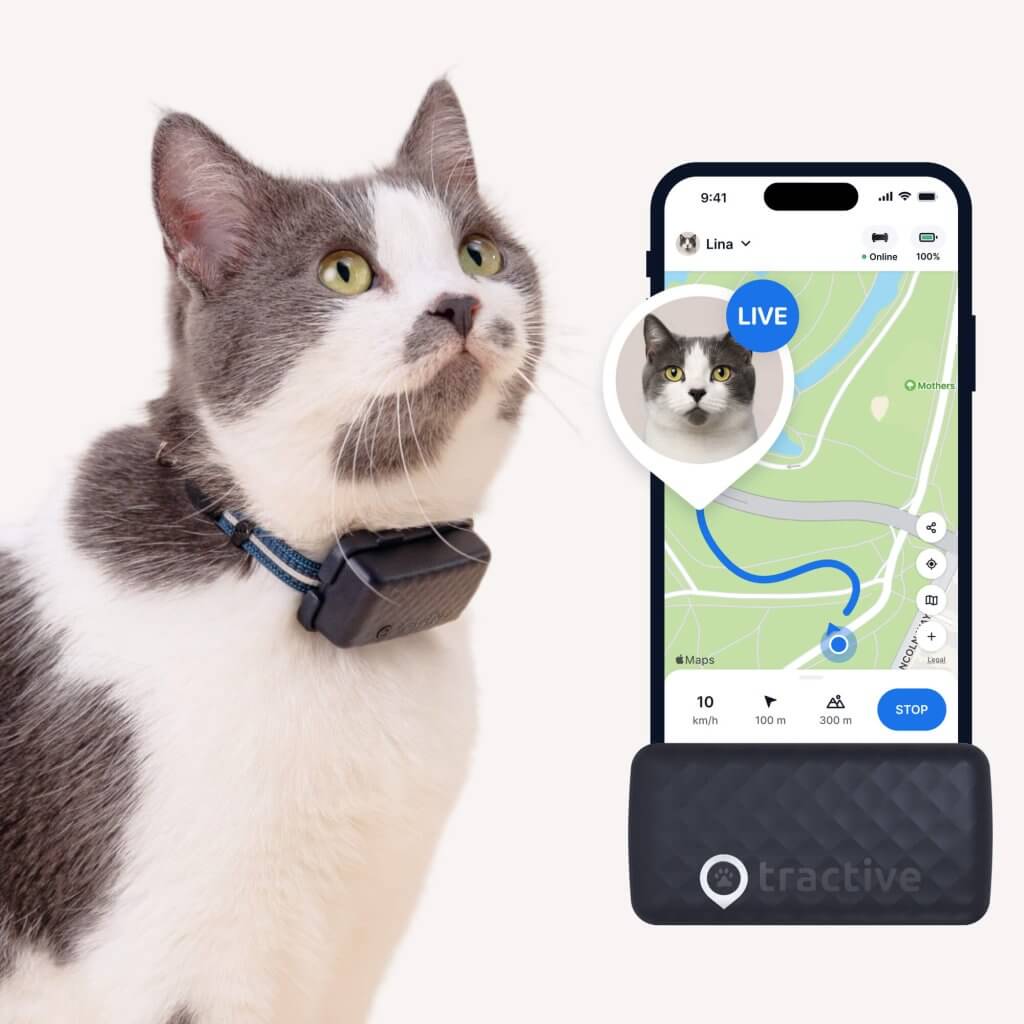How To Find A Lost Cat At Night
Worried your cat is lost at night? Discover how to search effectively after dark, use scent, tech, and gentle tactics to help your furry friend find their way back home.
Realizing your cat is missing at night can be a stressful moment – but with the right steps, there’s a good chance you’ll be reunited soon. In this guide, we’ll walk you through expert tips on how to find a lost cat at night — including why cats behave the way they do when lost, how to use your surroundings to your advantage, and the most effective nighttime search strategies.
Key Takeaways
- Stay calm and start searching immediately, focusing on places your cat might hide nearby.
- Use a flashlight and call your cat’s name gently – cats often hide silently when scared.
- Scent is powerful: leave familiar smells and items outside to help guide them home.
- Technology like the Tractive GPS & Health Tracker for cats offers real-time location updates, even in the dark.
- Don’t give up too soon – many cats return home after days or even weeks.

Find out where your cat spends their time.
Read moreWhy cats go missing at night
Cats are naturally more active during dusk and dawn – a behavior called crepuscular1. At night, they’re often more curious, alert, and ready to explore. If your indoor-outdoor cat slipped out or your indoor cat bolted through an open door, nighttime can make it harder to see or hear them.
Common reasons cats go missing at night:
- They chased something (like a mouse or bird).
- They got scared and hid.
- They became disoriented and couldn’t find their way back.
- They found a hiding spot they feel safe in and are waiting until it’s quiet to return.
What to do immediately when your cat goes missing
Time is key. Acting quickly increases your chances of finding your little buddy.
Step 1: Check your home and yard
Even if you think they’re outside, thoroughly check your house. Cats are excellent at hiding and squeezing into tiny spots – under beds, inside closets, behind appliances. Then move your search outside.
Look in:
- Bushes, hedges, and thick shrubs
- Sheds, garages, and under porches
- Your car (especially the engine compartment or wheel wells)
Step 2: Bring out their favorite smells
Cats rely heavily on scent to find their way. Try placing:
- A used blanket, cat bed, or your unwashed clothing near the door
- Their litter box (some people swear by this, but it may also attract other animals – use cautiously)
- A bit of their food (wet food with a strong smell can help)
Step 3: Keep calm and use a soft voice
Cats often hide when scared and may not come out if you sound frantic. Walk slowly, speak gently, and call their name in a calm, familiar tone. Use the same words or phrases you normally use, like “dinner time” or “come here, sweetie.”
How to search for a lost cat at night
Night searches come with their own set of challenges – but also some advantages. Cats feel safer moving around under the cover of darkness, so they may be more likely to return or respond.
Use a flashlight – even for hiding cats
Shine your flashlight low and watch for the reflection of your cat’s eyes. Check in tight spaces like under decks, parked cars, bushes, or near fences.
Pro tip: Bring a friend to help cover more ground.
Make quiet calls and listen carefully
Nighttime is quieter, making it easier to hear a faint meow or rustling. Pause often to listen. Shake a treat bag or tap their food bowl lightly – sounds they associate with something positive.
Search when the world is asleep
Between 10 PM and 4 AM is often the best time to search. Fewer cars, people, and noises mean your cat might feel safe enough to emerge.
Using technology to help you find your cat
If your cat is wearing the Tractive GPS & Health Tracker for cats, you’re already a step ahead.
Here’s how it helps:
- LIVE Tracking: See your cat’s real-time location on your phone, even at night.
- Location History: Check where they’ve recently been to spot patterns or hiding places.
- Virtual Fence Alerts: Get notified if your cat leaves your set safe zone – so you’ll know instantly.
It’s peace of mind in your pocket.

Track your cat wherever they go
See where they are in real-time, no matter how far they roam. Discover their territory. Get alerted if they go too far. Track activity, sleep, and receive health alerts if your cat’s activity changes. Keep your feline friend healthy and safe.
How to prevent your cat from going missing again
Once your feline friend is safely home, you’ll want to avoid another scare. Here’s how:
- Keep them indoors at night or create a secure outdoor enclosure (like a catio).
- Train them to come when called using positive reinforcement with treats.
- Attach an ID tag to their collar with your contact info.
- Use the Tractive GPS Cat Tracker to keep tabs on them 24/7.
Check out our guide on how to keep outdoor cats safe if your kitty loves exploring.
Final thoughts
Losing your cat at night can feel scary – but by staying calm, acting quickly, and using both tried-and-true methods and smart technology, you have a great chance of reuniting. Most lost cats don’t go far and are often found within a few houses of home. Trust your instincts, follow these steps, and don’t give up.
Ready to protect your adventurous kitty with real-time tracking? Try the Tractive GPS Cat Tracker and explore with confidence – even after dark.




